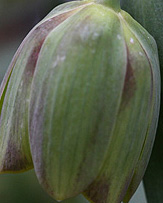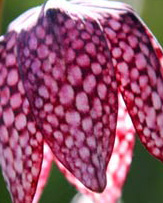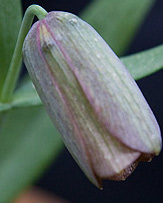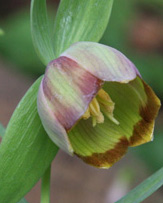
Frittilaria Imperialis
Fritillaria imperialis (picture right) is also known as the 'Crown imperial' or 'Kaiser's Crown' and is the largest growing of all of the fritillaries and is readily available for sale as mature flowering sized bulbs.
In cultivation F. imperialis is sometimes difficult to establish, however this is another bulb that is sought after widely around the world for its large and spectacular, if slightly smelly flowers.
F. imperialis comes in a variety of forms and colors including orange to red flowering F. imerialis rubra, F. william rex with its dark bronze flowers and the yellow flowering F. lutea.
Fritillaria imperialis Bulbs
The mature bulbs (picture Right) are large, almost as big as a fist, they have a hollow centre where the flower attaches and this causes the bulbs to be susceptible to rot given a wet winter.
A fantastic flowering bulb with an unpleasant odour, so don't plant this fritillaria near your front door. Look fo F.imperialis lutea maxima, the yellow flowering form, and F.imperialis rubra maxima with its orange flowers.
Fritillaria imperialis are the largest growing frit growing to nearly 1m. The distinctive mop top heap ranges in color from the yellow of Fritillaria imperialis 'Lutea' to the more common orange.
Care
Native to Turkey, Iran and Afghanistan these Fritillaria prefer hot dry summers and cold winters. Like most other species, in cultivation Fritillaria imperialis proper care requires a well drained position to avoid bulb rot, and for extra care can be successfully grown in a container or pot.
When planting we suugest that you plant rather deeply, at around 30 cm (12 inches) and ensure the position is not subject to water logging. In containers you need to add some extra drainage material and ensure the container is lifted of the ground to prevent drainage holes blocking in winter.
Growing F.imperialis from seed will take around 7 years to flowering size, keep the bulblets moist for their first two years. After that grow them in a container almost dry except in the growing season.
Problems
Bulb rot is the most common problem however the Crown Imperial is also subject to leaf spot, rust and mosaic virus and damage from snails and slugs.
For more Fritillaria and Fritillaria N urseries in the UK see our Main Fritillaria page or view information on individual species below:



